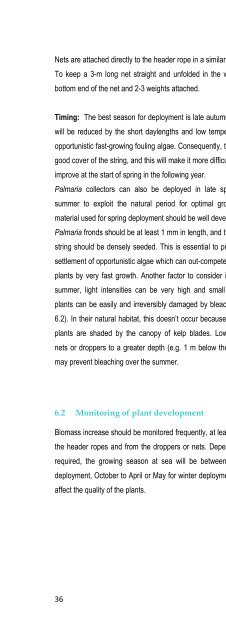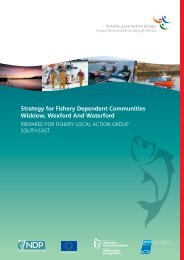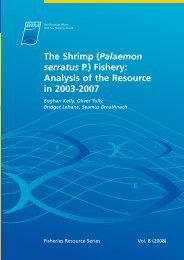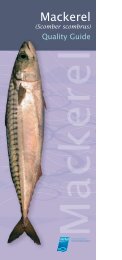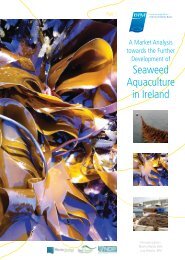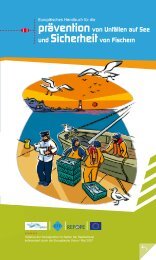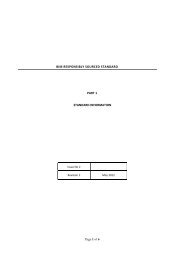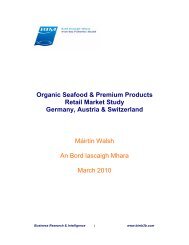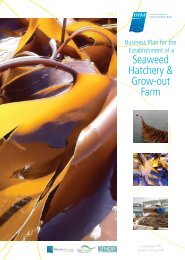Cultivating Palmaria palmata - Bord Iascaigh Mhara
Cultivating Palmaria palmata - Bord Iascaigh Mhara
Cultivating Palmaria palmata - Bord Iascaigh Mhara
You also want an ePaper? Increase the reach of your titles
YUMPU automatically turns print PDFs into web optimized ePapers that Google loves.
Nets are attached directly to the header rope in a similar way to the droppers but with multiple attachment points.<br />
To keep a 3-m long net straight and unfolded in the water, a metal or plastic rod should be attached to the<br />
bottom end of the net and 2-3 weights attached.<br />
Timing: The best season for deployment is late autumn/winter. At this time of the year, the growth of <strong>Palmaria</strong><br />
will be reduced by the short daylengths and low temperatures but these factors will also inhibit the growth of<br />
opportunistic fast-growing fouling algae. Consequently, the <strong>Palmaria</strong> will be able to grow sufficiently to develop a<br />
good cover of the string, and this will make it more difficult for fouling organisms to settle when growth conditions<br />
improve at the start of spring in the following year.<br />
<strong>Palmaria</strong> collectors can also be deployed in late spring/early<br />
summer to exploit the natural period for optimal growth. The<br />
material used for spring deployment should be well developed, i.e.<br />
<strong>Palmaria</strong> fronds should be at least 1 mm in length, and the culture<br />
string should be densely seeded. This is essential to prevent the<br />
settlement of opportunistic algae which can out-compete <strong>Palmaria</strong><br />
plants by very fast growth. Another factor to consider is light. In<br />
summer, light intensities can be very high and small <strong>Palmaria</strong><br />
plants can be easily and irreversibly damaged by bleaching (Fig.<br />
6.2). In their natural habitat, this doesn‟t occur because <strong>Palmaria</strong><br />
plants are shaded by the canopy of kelp blades. Lowering the<br />
nets or droppers to a greater depth (e.g. 1 m below the surface)<br />
may prevent bleaching over the summer.<br />
6.2 Monitoring of plant development<br />
Biomass increase should be monitored frequently, at least once a month. Fouling algae should be removed from<br />
the header ropes and from the droppers or nets. Depending on the time of deployment and the size of plants<br />
required, the growing season at sea will be between 5 and 8 months (e.g. May to September for spring<br />
deployment, October to April or May for winter deployment). Fronds should be harvested before fouling starts to<br />
affect the quality of the plants.<br />
36<br />
Fig. 6.2. <strong>Palmaria</strong> <strong>palmata</strong> on a longline in<br />
Strangford Lough in June. The green tips<br />
indicate bleaching by high light. At this stage<br />
affected tissue can still recover.


